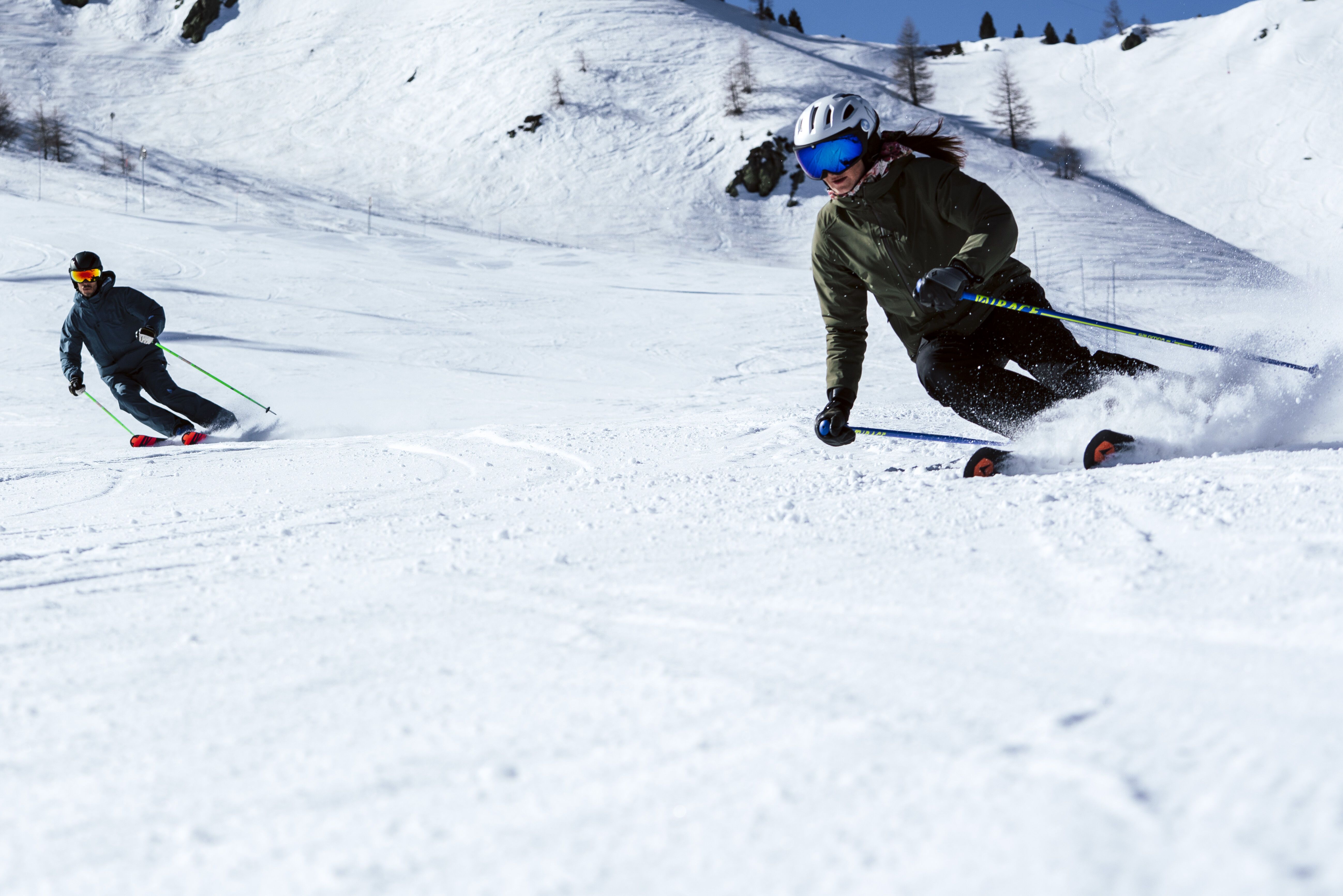SNOW GOOGLES: WHAT TIPS TO
AVOID FOGGING?
March 21st / 4 minute read
It's time to go skiing! Ready to hit the slopes, however, you notice that your goggles are fogging up. A problem encountered by all skiers, a few simple tips to implement make it very easy to get rid of fog and even prevent it from forming. Discover our best tips for getting rid of fog on your screen or glasses.

WHY DOES FOG FORM ON MY GLASSES AND GOOGLES?
A completely normal physical phenomenon, fogging is the consequence of the transformation of humidity in the air into water. As the warm air produced by your face hits the cold surface of your mask or goggles, this encounter condenses the moisture from its gaseous to liquid form. Fine water droplets then form and attach to the glass of your screen, obstructing vision. In general, this reaction occurs when there is a significant difference between the temperature of the outside air and that trapped between your skin and your glasses. That's why she often performs on the tracks.
+ HABITS TO AVOID
A few bad habits can cause your sunglasses or screen to fog up.
If you regularly take off and put on your goggles or ski goggles, for example, you greatly increase the risk of condensation. Likewise, if you tend to pull your goggles up your forehead when you're not skiing, consider that this part of the face is one of the most heat and moisture producing. In fact, when you put your mask on your forehead and you sweat, the protective foam contours become gorged with sweat. Replacing it over your eyes afterwards will cause the airflow to draw moisture inside and cause fogging. Be aware that a ski goggle that is too tight will also promote condensation, covering the surface of your screen with annoying droplets.
> You may also like : How To Choose Your Ski Goggle?
THE MOST EFFECTIVE TIPS AGAINST FOGGING
How do you avoid fogging up your goggles or ski goggles? The 5 best practices to adopt.
+ KEEP SKI GOOGLES AND GOOGLES WARM
In order to prevent too great a hot-cold difference when putting your ski goggles on your eyes, avoid storing this type of equipment in places where the temperature is generally low, such as an attic, cellar or trunk. 'a car. On the contrary, keep your goggles or mask with the rest of your ski clothes in a heated room.
+ NEVER WIPE THE INSIDE OF THE LENSES
While you are skiing, fog suddenly forms on your screen and your vision blurs. In this case, the reflex is often to want to remove your glasses or mask to clean the lenses. However, it is better to avoid giving in to this temptation, because this little cleaning done in a hurry risks damaging the anti-fog treatment applied to the inside of your screen. Instead, let the fog disappear on its own by air-drying your ski goggles for a few seconds, then put it back on.
+ WEAR A BALACLAVA AND NECK WARMER CORRECTLY
In order to protect themselves from the cold, many skiers equip themselves with a neck warmer or a balaclava. A great idea to keep your face warm but can cause fogging. Indeed, if they are not put on correctly, that is to say without being in contact with the foam of your mask or under your glasses, the neck warmer like the balaclava will have the disadvantage of directing the air hot as you exhale towards your eyes.

+ LET THE AIR CIRCULATE PROPERLY
If you prefer to wear a ski mask rather than goggles, avoid obstructing the ventilation of the latter with a cap, for example, or by letting snow accumulate on it. If the air does not circulate properly, it will not be evacuated as it should and this will certainly create fog on your screen.
+ PRIORITIZE QUALITY EQUIPMENT
In order to benefit from maximum comfort, prefer high-end models. The ski goggles and goggles offered by renowned manufacturers are thought out and designed to offer optimal performance and thus accompany you all day on the slopes.
Specially equipped with the “Anti-Fog Platinum” coating on the Phantom and Phantom+ photochromic lens models, Bollé ski goggles and mountain goggles also provide exceptional optical clarity of vision, whatever the weather conditions.
> You may also like: What are the Benefits of a Photochromic Ski Goggle?